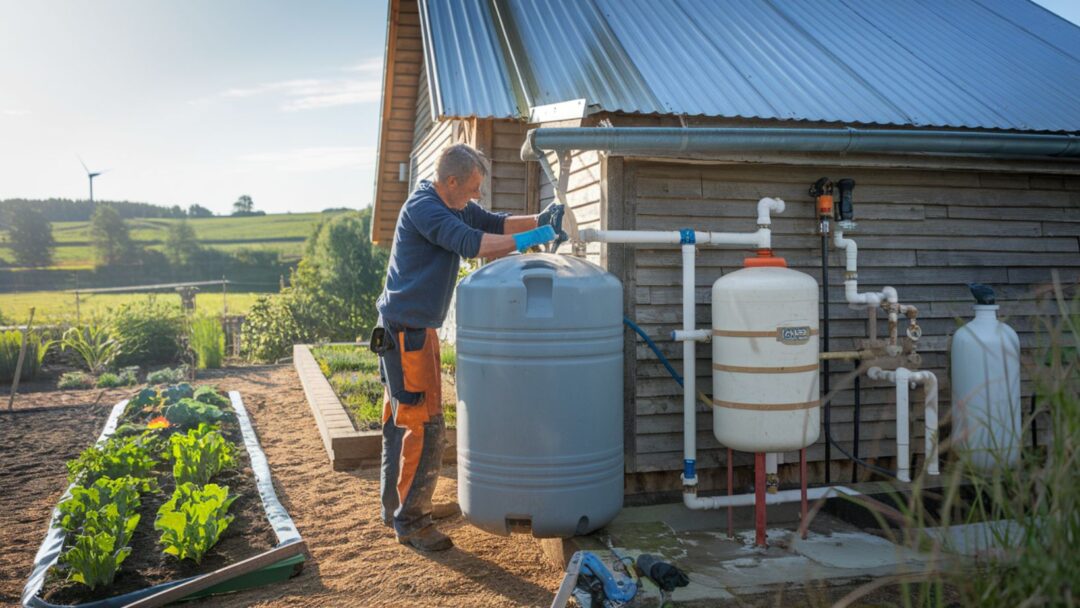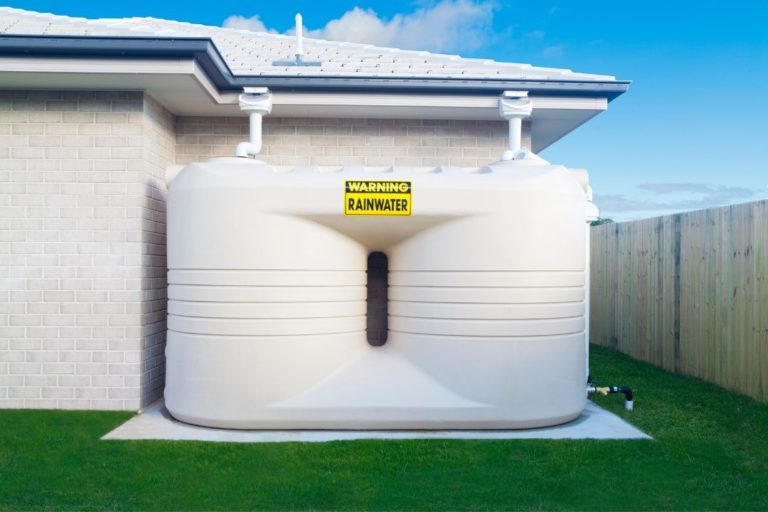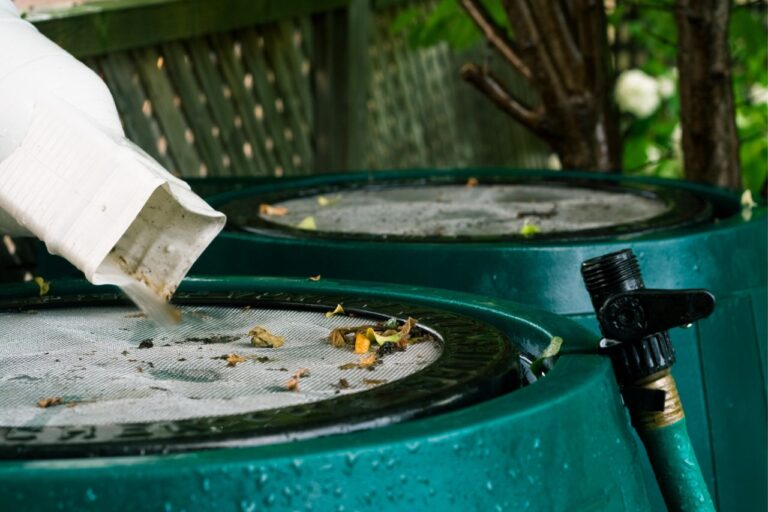DIY Rainwater Harvesting Ideas for Beginners
Have you ever thought about all the water that dances off your roof during a rainstorm? It’s like nature’s way of giving gifts, and yet, so often, we let it slip away. It might surprise you to learn that capturing this rainwater can lead to a deeper, more intimate connection with your environment while also helping preserve one of our most precious resources. Let’s explore how, with a few DIY ideas, you can start harvesting rainwater even if you’re completely new to it.
Understanding the Basics of Rainwater Harvesting
At its core, rainwater harvesting is about collecting and storing rainwater rather than letting it run off and go to waste. It might sound a bit technical, but it’s quite straightforward. Imagine a method where you, quite literally, catch the rain. This practice dates back to ancient civilizations, yet it’s as relevant today as it ever was. Whether you’re looking to water your plants, save on water bills, or simply make an eco-friendly choice, rainwater harvesting is the way to go.
Why Should You Consider Rainwater Harvesting?
You might be wondering why all this talk about rainwater harvesting is even necessary. You live in a world where resources dwindle faster than you might like to admit. By choosing to harvest rainwater, you’re choosing to make a positive impact on your environment. You’re saving water and reducing reliance on treated water sources, which often require significant energy and chemicals. Plus, harvested rainwater is naturally soft, devoid of minerals, chlorine, or other chemicals, making it gentle for plants.
Evaluating Your Home’s Potential for Rainwater Collection
Before diving headlong into the installation process, you should first assess whether your home is well-suited for rainwater harvesting. Look at your roof, as it’s the primary surface where water will be collected. Is it large enough, and does it slope properly to facilitate runoff? Check your gutters, too—are they in good condition and capable of directing water into a storage system? By taking these factors into account, you can better plan your rainwater harvesting project.
Getting Started with Simple Rain Barrel Systems
Once you’ve got the basics down, you’re ready to pick a straightforward approach for your introductory foray into rainwater harvesting. The rain barrel system is user-friendly and perfect for beginners—it doesn’t require complex infrastructure. Picture a large container positioned beneath your downspout; it’s as easy as that.
Choosing the Right Rain Barrel
Not all rain barrels are created equal. The size, material, and design of the barrel play crucial roles in its efficiency and suitability for your needs. You could opt for simple plastic barrels, which are cost-effective and easy to find, or you might consider more aesthetically pleasing options like wooden designs.
Here’s a quick comparison:
| Type | Advantages | Disadvantages |
|---|---|---|
| Plastic | Lightweight, Durable, Inexpensive | Can degrade in sunlight over time |
| Wooden | Aesthetically pleasing, Eco-friendly | More expensive, Requires maintenance |
| Metal | Long-lasting | Prone to rust, Heavier to maneuver |
Setting Up Your Rain Barrel
After choosing your rain barrel, the next step is setting it up. It should be placed under a downspout, elevated slightly to allow gravity to do its work. Most barrels come with a spout or tap at the bottom, making it easy to attach a hose or fill a watering can. Remember to mesh or cover the top to keep out debris or curious critters.

Moving Beyond: Building a More Comprehensive Rainwater Harvesting System
As you grow more comfortable with the concept and basics, you might want to step up your rainwater harvesting game. More advanced systems can offer increased capacity and additional features, such as filtration to provide potable water.
Advanced Tank Systems
An upgrade from simple rain barrels, larger tanks or cisterns can collect a significant amount of water, perfect for those with large gardens or for household use. These systems can be installed underground or above ground, made from varied materials such as concrete or polyethylene.
Understanding Installation Techniques
Installing a larger tank might be a bit more complex, and can require professional assistance due to excavation and plumbing works. The main tasks involve connecting the tanks to several downspouts and integrating a filtration system if necessary.
Integrating Filtration and Irrigation Systems
A key advantage of an advanced system is integrating filtration that allows you to use the rainwater inside your home. Moreover, an irrigation system can make watering your garden easy as pie without lifting a watering can or dragging through hoses.
Sustaining Your Rainwater Harvesting System
Once you’ve set up your rainwater harvesting system, the next key aspect is maintenance. Like everything else in life, it demands your care and attention to ensure it remains effective and continues serving its purpose.
Seasonal Maintenance
As seasons change, fluctuating temperatures and varying debris can affect your system. It’s necessary to clean your gutters and nets before the rainy season to assure unobstructed collection and flow. During winter, understand whether you need to drain the system, depending on freezing temperatures.
Regular Checks and Balances
Every few months, give your system a once-over. Look for signs of wear, leaks, or material degradation. Regular checks allow you to catch potential issues early before they turn into costly repairs, keeping your system functioning smoothly throughout the year.

The Emotional Connection: Why Harvesting Rainwater Matters
Beyond the functional benefits, there’s an emotional element tied to rainwater harvesting. This isn’t just about practicality; it’s about fostering a sense of stewardship toward your environment. When you harvest rainwater, you become part of a broader narrative. You’re not just a passive observer but an active participant in nature’s cycle. This simple act can profoundly reshape how you view your relationship with nature and your surroundings.
Feeling Empowered by Sustainability
There’s something incredibly empowering about taking responsibility for your resource consumption. By choosing rainwater harvesting, you’re choosing to confront environmental challenges head-on, one drop at a time. It’s a testament to your resilience and adaptability, no matter how small the step appears.
The Community Around You
Interestingly enough, your rainwater efforts can ripple into your community, possibly inspiring others around you to adopt similar practices. This shared initiative can build a community bound by common goals for sustainability. Imagine the collective impact!
Addressing Common Concerns and Myths
It’s natural to have a few reservations before committing to rainwater harvesting, especially when myths abound. Let’s tackle a few of these to put your mind at ease.
“Is It Even Legal?”
Rainwater harvesting legality varies by location, with some regions embracing it wholeheartedly, while others have restrictions. Always check with local ordinances or water district policies to ensure you’re compliant with legal standards.
“Will It Attract Mosquitoes?”
A common misconception is that stored water equals mosquitoes. However, with proper maintenance and by using well-sealed systems with mesh covers, you deny mosquitoes a place to breed.
“Can I Use the Water Indoors?”
For sure, but it depends on the system’s complexity and proper filtration. Basic systems provide water suitable for outdoor gardening, but with better filters, you can extend usage indoors beyond just watering plants.
Planning for the Future: Expanding Your Rainwater Collection Efforts
After you’ve gained experience and confidence in rainwater harvesting, you might want to think long-term and expand your system. It’s about building on your success and continuing the journey toward a sustainable lifestyle.
Increasing Storage Capacity
Consider investing in more or larger storage tanks to harness more water, especially if you find that you’re running low between rainfalls. Larger storage allows you to capture as much of those raindrops as possible, giving you a steady supply no matter what.
Innovating with Technology
There are always new technologies and smart systems emerging in the world of rainwater collection. Explore innovations like automated irrigation or app-based monitoring to make your system more efficient and convenient. Innovations can broaden horizons and appeal to the tech-savvy among you.
Conclusion
In the end, embracing rainwater harvesting isn’t just a practical decision but a deeply personal one, rooted in a desire to connect more intimately with your environment. Through careful planning, execution, and maintenance, this initiative can make a meaningful difference. By capturing rainwater, you’re not merely safeguarding personal resources but choosing to become part of a larger movement towards sustainability. It’s an endeavor that promises not just functionality, but fulfillment and connection. Who knew something as simple as water falling from the sky could be so impactful?






